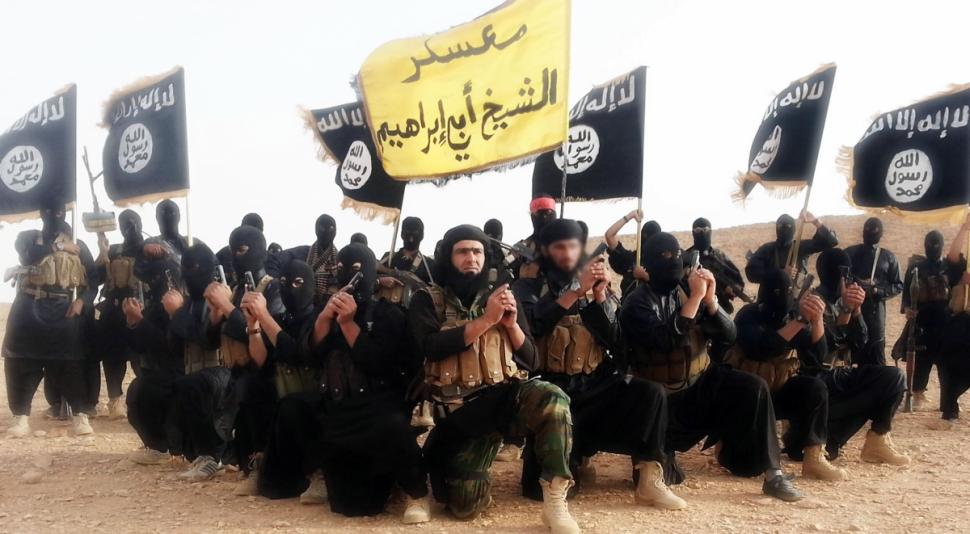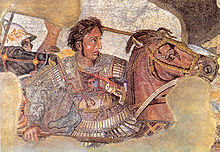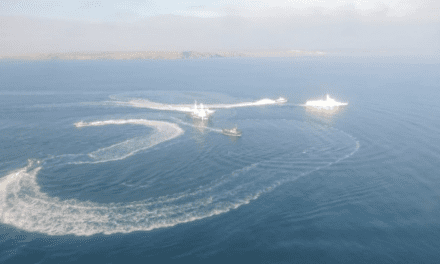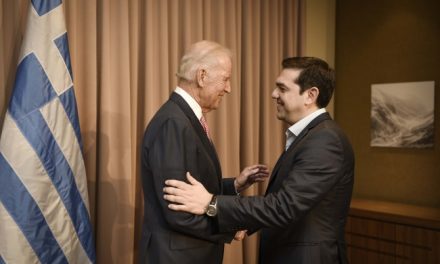Critics have long called the U.S.’s Syria policy feckless. But the Paris attacks brought this to a head, with renewed calls for escalation to end the Islamic State’s threat and prevent another Paris.
But the critics’ policies won’t end the threat either. More than a decade of continuous warfare against militants in Afghanistan, Iraq, Libya and elsewhere have taught us a great deal about what works, what doesn’t, and why. And that experience suggests that to defeat the Islamic State — defined as eliminating its ability to carry out Paris-style terrorism — would require a vastly greater effort than almost anyone now proposes, and a vastly greater effort than the American public is likely to support.
In practical terms, what’s possible against the Islamic State is some form of containment or suppression. And that’s essentially what the administration’s current policy amounts to. You can quibble with elements of that policy, but we’re stuck with its basic outline. The Western interests at stake are limited; the underlying problem is deeper and tougher than critics imply, and the cost to solve the real problem is much higher.
Like it or not, we are going to be living with containment and suppression for a long time.
Critics’ escalation plans might win a battle. But what about the insurgency and conflict afterward?
Current escalation proposals differ in their details, but most would relax targeting constraints on U.S. airstrikes and send in limited numbers of additional American ground troops, typically fewer than 20,000 to 25,000, to help local allies overrun the territory now held by the Islamic State.
Some see these U.S. troops mostly as targeteers to direct U.S. airstrikes from the front and as advisers or trainers for allied fighters. Others see the U.S.’s role as sending in troops to lead the assault, with local allies following to hold what the Americans would conquer. Either approach would surely increase today’s tepid rate of advance; the latter could surely take the Islamic State capital of Raqqa if properly supported from the air.
The problem, however, doesn’t end when someone pulls down the Islamic State flag in Raqqa.
If the 2003 Iraq campaign, the 2001-2 Afghan campaign, or the 2011 Libya campaign tell us anything, it is that taking the enemy’s capital does not reliably end the war. Replacing a hostile regime with a weak successor in a splintered society or, worse, catalyzing anarchy, simply launches the war’s next phase: insurgency and civil conflict.
The resulting chaos is often little better for U.S. interests than what came before.
The Islamic State itself has now established local affiliates in unstable post-Moammar Gaddafi Libya and in ill-governed parts of eastern Afghanistan. Its predecessor, al-Qaeda in Iraq (AQI), got its start in the security vacuum of post-Saddam Hussein Iraq. Many other militant groups hostile to Western interests have exploited the same disorder in these and other war zones.
In fact, today’s Islamic State threat and the Paris attacks themselves are consequences of the failure to create a stable regime in Iraq in 2003 after Hussein fell, and the failure of Iraqi politics following the hard-won stabilization of the country from 2006-9. The real challenge in ending the threat of Islamist terrorism from the territory the Islamic State now controls isn’t taking Raqqa. It’s what follows.
And what follows is very hard. Some now believe it’s impossible for the United States to succeed at the counterinsurgency (COIN), state-building, and stabilization needed after regime change. Others disagree, but even COIN optimists expect such projects to be very expensive. The U.S. COIN doctrine that emerged from the Iraq war prescribes at least twenty counterinsurgents for every thousand civilians. That means 160,000 troops would be needed to hold the area now under Islamic State control.
We could probably take Raqqa with 20,000 U.S. troops. But to actually solve the problem is a much bigger job, which would require addressing political challenges in Syria that are far more complex than those the United States failed to solve in Iraq.
We want to rely on local allies. But they have different goals than we do.
Can we get local allies to do the heavy lifting for us? Many current proposals rely heavily on local forces, either to take Islamic State territory for us, to hold it after we take it, or perhaps to play the stabilization role needed to prevent chaos and anarchy after Raqqa falls.
But the past 14 years’ experience reveals serious limits on what allied militaries can achieve in such roles.
The underlying problem here is interest misalignment. War is a fundamentally political undertaking, and political interest lies at the heart of effective performance. But U.S. interests and local allies’ rarely align in these kinds of wars.
In Syria and Iraq today it is far from clear that Shiite Iraqis, Iraqi or Syrian Kurds, or even Syrian Sunni warlords care enough about Raqqa (or Mosul or Ramadi) to wade into urban close combat for American purposes that those allies only weakly share.
Kurds are willing to die for a future Kurdish state in northern Iraq and Syria. Iraqi Shia are willing to die to defend the Shiite homeland. Syrian Sunni warlords often see one another as prospectively existential threats. None see defeating the Islamic State and policing the territory it now holds as their first priority.
Post-2001 U.S. military experience suggests that we can’t expect such allies to take on risky, complex ground combat that could take advantage of American airpower and hold and govern what’s now Islamic State territory.
What experiences are we talking about? Consider the 2001-2 campaign in Afghanistan, which succeeded largely because of a rare alignment of U.S. interests with Northern Alliance allies who wanted the Taliban out of Kabul as much as Americans did. That combined with reasonable tactical proficiency to enable local U.S. allies to take ground against determined resistance, with the support of American airpower.
But even in 2001-2, the U.S.’s allies were a mixed lot. When the local ally lacked either the motivation or the skill, even 21st century precision U.S. airpower wasn’t enough.
Massive U.S. efforts to train and advise allied militaries in post-2002 Afghanistan and post-2003 Iraq foundered on similar shoals. In Iraq and Afghanistan the U.S. dedicated hundreds of billions of dollars and many thousands of advisors, hoping to create allied militaries that could hold ground against insurgents after U.S. troops withdrew. But the U.S.-built Iraqi Army in Mosul collapsed in 2014. The Afghan National Security Force is losing ground now that NATO’s combat mission has ended.
In places like Iraq, Syria, Afghanistan, and elsewhere, our allies focus on neutralizing political rivals within their own ranks rather than carrying out the mission that the U.S. wants: politically disinterested warmaking against the external threat of the Taliban, AQI, or Islamic State.
And how do our allies buy off or contain internal rivals? In ways that undermine their militaries’ effectiveness against what the United States sees as the main threat. Corruption, for example, is the natural way to buy loyalty, but it erodes effectiveness–and has undermined most of the U.S.’s efforts to build security forces to help us fight the terrorists we see as the real enemies. And it will continue to do so, as long as the United States and our allies have systematically misaligned interests.
Taking and holding the Islamic State’s territory would require at least 100,000 troops
Some hope that we will see another uprising like the one in 2006-7 in Iraq, called the Anbar Awakening. In this vision, Sunni tribes will rise up and fight against Islamic State rule as they did against AQI in 2006-7.
But frustration with despotism isn’t enough to sustain such uprisings. The 2006-7 Awakening was brutally counterattacked by AQI, and survived only because the U.S. military could protect it. The Islamic State today will be at least as harsh with any Sunnis who try a similar rebellion. But in 2006-7, large numbers of U.S. ground forces protected the rebels. That’s not happening again. It will be a long time, if ever, before the preconditions that enabled the 2006-7 Awakening are replicated for the Islamic State.
So experience counsels caution about expecting local allies to take and hold the territory now controlled by the Islamic State. Even 20,000 U.S. troops wouldn’t be enough to do what critics say they want; to solve the real problem any time soon would require well over 100,000 Western troops.
If you’re not willing to pay that price (and not even John McCain is proposing anything remotely like 160,000 U.S. troops for Syria and Iraq), then we’re not actually going to solve the problem and all we can do is manage it. Realistically, that means long-term containment and suppression — or just what the Obama administration now seeks.
What’s left: Containing the Islamic State until it collapses from within
A containment strategy would try to limit the Islamic State’s lethality and contagion, and wait for the Islamic State to collapse from within — as it almost certainly will.
The Islamic State will eventually exhaust its ability to support a war effort. Its territory is mostly desert with little economic activity. Oil production is dropping, partly because equipment is bombed or failed and partly for lack of experienced management. What oil is sold goes at a discount rate. Taxes are the main source of revenue, and they appear to be high and unpredictably imposed.
Those who can flee often do, resulting in serious drain of human capital. The group’s treasury will surely erode over time: two decades of research in economics and politics have shown that highly extractive autocracies cannot sustain economic growth.
Of course this is far from ideal. It could take many years for the Islamic State to exhaust its economy. Meanwhile it would still pose a terror threat. And the way containment would end that threat is by slowly strangling the Islamic State’s economy, which means impoverishing the population. Containment thus means real suffering for millions of innocents trapped in places like Raqqa, Mosul, and Ramadi, innocents who are already being kept in place with coercive measures.
But what alternative is there? Moving a little bit further, a little bit faster, up the escalation ladder by adding only 10-20,000 more troops will increase the costs to Americans—without much changing the outcome. We’ve seen this movie before.
To paraphrase Churchill, the evidence suggests that containment is the worst option except for all the others. Nothing in the Paris attacks changes this regrettable fact.
Stephen Biddle is professor of political science and international relations at George Washington University, adjunct senior fellow for defense policy at the Council on Foreign Relations, and author of “Military Power: Explaining Victory and Defeat in Modern Battle.”
Jacob Shapiro is associate professor of politics and international affairs at Princeton University and co-directs the Empirical Studies of Conflict Project. He is the author of “The Terrorist’s Dilemma: Managing Violent Covert Organizations.”



















